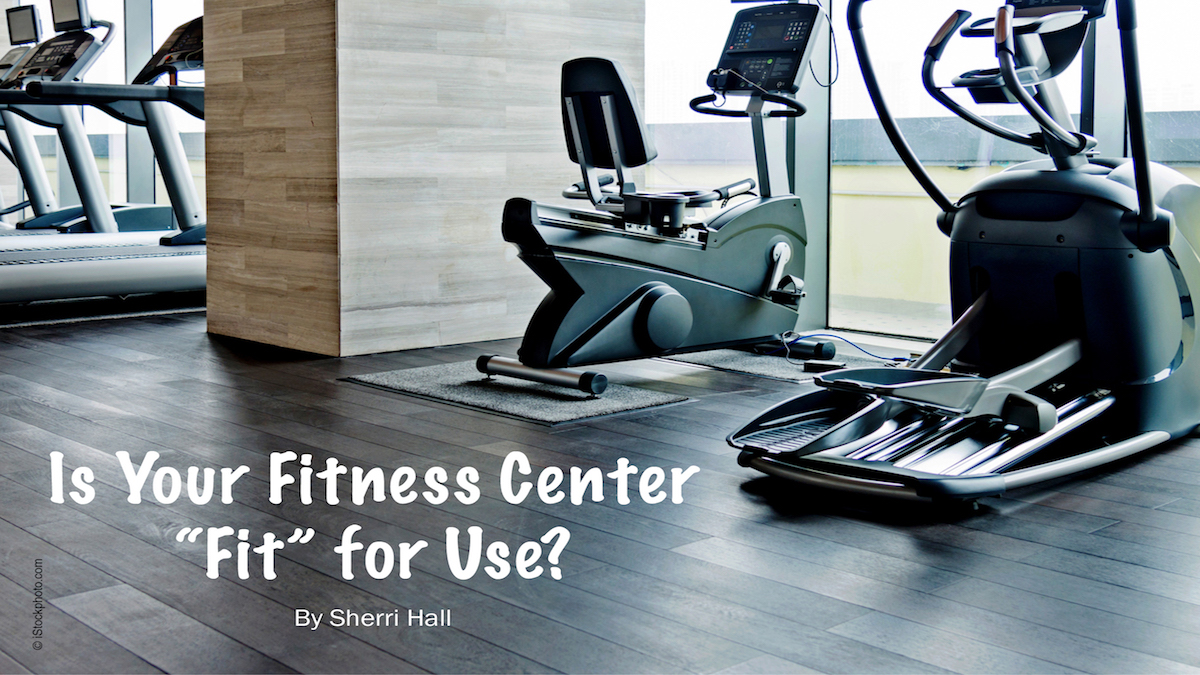
Keeping your Fitness Center “Fit” for Use
Feature Story
Keeping your Fitness Center “Fit” for Use
If your community offers a fitness center for its residents, you may be wondering when it’s time to upgrade the facility and with what type of equipment. According to Gus Fasois, of EnerG Wellness in Edison, New Jersey, there are some signs associations should look for that indicate the need for changes to be made to the fitness center.
The first telltale sign that upgrades are in store, said Fasois, is a consistent flow of service issues. For example, if a particular piece of equipment is constantly in need of repair and the association regularly calls a service technician to fix it, it’s probably time to go ahead and replace that machine. Fasois explained that the association might be spending $100 to $200 on each repair which can add up quickly and become very costly to the community. On top of that, the equipment may be so old and outdated that it’s not even worth the amount being spent on the repairs. “If you’re spending too much money on old equipment to keep it up and running, that’s the first sign changes need to be made,” said Fasois.
He added that sometimes old equipment might be so outdated that parts are no longer available for it. At that point, the equipment cannot be repaired and the association will have to make a decision about replacing it.
In most cases, the association can replace one or two pieces at a time, Fasois noted. However, as more and more machines become outdated, it ultimately leads to a significant amount of equipment replacement.
Another sign that the fitness center might need an over haul is when it dissuades new buyers from purchasing a home within the community, Fasois said. If potential homebuyers feel the fitness center is outdated in that it has older equipment and the overall look of the room itself is not appealing, they may choose another community. The appearance of amenities can affect the property values within a community, said Fasois. He noted that it’s important for the amenities, including the fitness center, to be reflective of the community’s overall image.
Fasois added that lack of use is another sign the fitness center may need a makeover. An association might take the position that if no one is using the facility, then it doesn’t need to be upgraded. However, Fasois believes that the opposite is true. “If it were to be updated, people would use it,” he said, adding that people of all ages and demographics are involved in fitness. “If the community’s fitness center is not being used, it’s either because it is ill-equipped or the equipment is too old and no one wants to use it,” he noted.
What are the new trends in fitness? According to Fasois, the newest trend is High Intensity Interval Training (HIIT). “It’s a more intense workout,” Fasois explained. “You work harder for 15 minutes rather than working at a casual pace for 45 minutes.” He noted that this type of workout is very beneficial and takes less time for those with busy schedules.
“Fitness has changed,” said Fasois. “Today, people have a better idea of what a healthy lifestyle involves, and they want to be fit and feel good. Workouts are more about health and fitness and less about appearance.”
What types of machines are communities adding to their fitness centers to keep up with the trends? Fasois said that the newest piece of equipment is the adaptive motion trainer, which is a combination of a treadmill, stepper and elliptical machine and puts less impact on a person’s body and joints. The dual action bike is also a popular machine because it allows the user to exercise his or her whole body, making for a more intense workout. In addition, Fasois said there has also been a reemergence of rowing machines and step mills as well.
What should an association’s first step be when it comes to upgrading its fitness center? According to Fasois, an association should enlist the help of a qualified, experienced fitness equipment consultant who will serve as a guide throughout the process. The consultant will evaluate the space and provide advice on the design and layout of the facility, such as what will fit and what the flow of the room will be. The consultant can also assist with budgeting, said Fasois, who added that loans are often an option for this type of project which will allow the association to spread out the payments over a period of time.
Fasois noted that when planning a fitness center upgrade, the association should also determine the use of the facility. “Find out who’s using it and the type of use it’s getting so you can purchase the right equipment,” he said.
For example, the type of equipment that would appeal to an active adult community would be different than a community made up of mostly young professionals, he explained. However, if there is a diverse population, that must be taken into consideration when making the decision. “You have to find a happy medium,” said Fasois, “which is something the consultant can help with.”
Tags: Article
Trackback from your site.